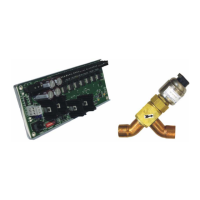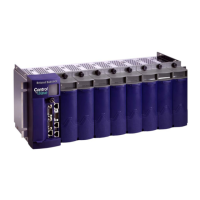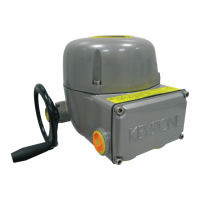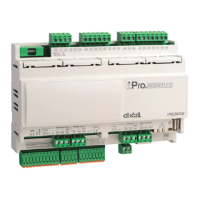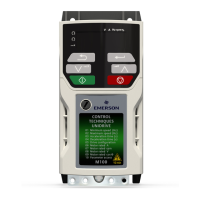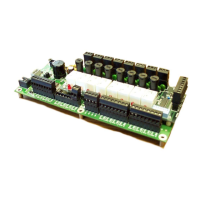
Do you have a question about the Emerson MultiFlex Series and is the answer not in the manual?
| Mounting | DIN Rail |
|---|---|
| Power Supply | 24V DC |
| Storage Temperature | -40°C to 85°C |
| Humidity | 5% to 95% non-condensing |
| Isolation Voltage | 1500V AC |
| Certifications | CE, UL |
Details the MultiFlex 16 input board with its sixteen analog/digital input points.
Covers boards combining digital/analog inputs with relay, digital, and analog outputs.
Introduces other specialized MultiFlex boards like RTU, RCB, CUB, and PAK.
Explains the procedure for installing MultiFlex boards using snap-track mounting.
Describes the plug-in output boards and their relation to base boards.
Details the 24VAC power requirements and compatible transformers for MultiFlex boards.
Guidance on selecting appropriate transformer VA ratings for MultiFlex devices.
Specific wiring instructions for powering the MultiFlex 16 board.
Power wiring for combination I/O boards, differentiating new vs. old styles.
Wiring instructions for new-style combination I/O boards with isolated power.
Wiring instructions for old-style combination I/O boards without isolated power.
Specifies recommended wire types and maximum lengths for powering I/O boards.
Details the recommended wire types for RS485 I/O network wiring.
Explains how to configure the RS485 network using a daisy-chain topology.
Determines the maximum number of MultiFlex boards that can be daisy-chained.
Assigning unique network ID numbers to boards for controller identification.
Instructions for setting network ID numbers for the MultiFlex 16 board.
Guidelines for assigning network IDs to various MultiFlex combination I/O board models.
Specific instructions for setting network ID numbers for the 168DO board.
How to set the communication baud rate using dip switches.
Configuring termination jumpers for RS485 network segments.
Covers connecting sensors, input wiring, and sensor types for MultiFlex inputs.
Step-by-step guide for wiring sensors to MultiFlex input points.
Details the wiring for sensor signal and ground connections to input points.
Instructions for wiring when replacing older CPC input boards with MultiFlex.
Specifies wiring types required for various sensors used with MultiFlex.
How to set input type dip switches based on sensor requirements.
Connecting pulse accumulation inputs to MultiFlex boards.
Details the DC power sources (+12VDC, +5VDC) available on the MultiFlex board.
Specifies current limits for the on-board DC power sources.
How to power sensors requiring 24VAC from the board's connection.
Guidance on sensor types and controller compatibility for MultiFlex inputs.
Describes the Form C relay contacts and their wiring and fail-safe settings.
Configuration of fail-safe dip switches for relay output behavior.
Specifies the ratings and fuse protection for MultiFlex relay outputs.
Details the 0V to +10VDC analog outputs, their current limits, and functionality.
Describes the +8VDC digital outputs on the 168DO board, including their rating.
Indicates board power and operational status through a blinking green LED.
Shows network communication activity, indicating data transmission and reception.
Indicates failure conditions with blinking rates signifying specific errors.
Shows the ON/OFF status of individual relay outputs on the board.
Overview of screens and functions accessible via the HHT.
Explains how to navigate through the HHT interface screens and menus.
Details the information displayed on the HHT's initial opening screen.
Displays current network address settings for various board types.
Shows baud rate and pulse settings, not modifiable via HHT.
Menu to select viewing or configuring inputs, relay outputs, or analog outputs.
Allows viewing input status in volts, engineering units, or configuring input types.
Menu to choose between viewing input status or configuring input settings.
Displays current input voltage values for up to four inputs.
Shows input status in designated engineering units.
Specifies sensor types and engineering units for input points.
Displays the ON/OFF status of relay outputs and allows temporary overrides.
Shows current analog output voltage and allows temporary overrides.
Displays analog output voltage and enables temporary output value overrides.
Sets fail-safe values for analog outputs when communication is lost.
Shows the current pulse percentage for digital outputs on the 168DO.
Displays the pulse period in seconds for digital outputs on the 168DO.
Sets the default percentage for digital outputs during communication loss.


